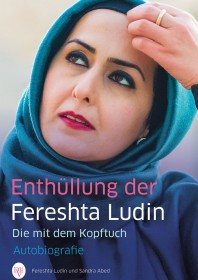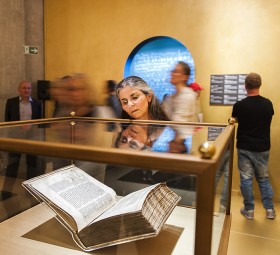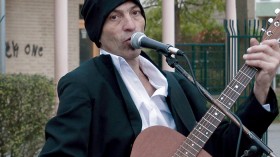Search Results for
"question"
A Conversation with Fereshta Ludin about the Headscarf Debate, Discrimination, and Her Hopes for the Future.
To win the right to work as a teacher in the classroom while wearing her headscarf, Fereshta Ludin had to go all the way to the German Supreme Court (see below). On 17 September 2015, she will join us as part of the series “New German Stories” to introduce her book Enthüllung der Fereshta Ludin. Die mit dem Kopftuch (“The Unveiling of Fereshta Ludin: The One with the Headscarf”). Rafiqa Younes and Julia Jürgens spoke with her in the lead-up to the event.

Book cover © Deutscher Levante Verlag
Ms. Ludin, did you ever guess that the first lawsuit you filed against your employers, in 1998 when you were 25 years old, would set off a nationwide debate about the headscarf ban?
You can’t really imagine something like that. I was still very young and idealistic. I wanted to work as a teacher and had no intention of provoking the public or any politicians.
From your perspective, was it worth it to go all that way through courts, becoming, as you did, a public figure – “the one with the headscarf” as the title of your book ironically references?
I don’t regret a single step along the way. I would have regretted much more, to have had to endure the injustice. I took an active stand against discrimination by going through the courts. Many other women were also affected. It was never my aim to become a public person. (more…)
A Conversation about the Exhibition “Obedience”
The exhibition “Obedience. An Installation in 15 Rooms by Saskia Boddeke & Peter Greenaway,” which has just been extended for two months, prompts extremely varied visitor responses. Atalya Laufer and Marc Wrasse regularly give guided tours of the exhibition. They talked to me recently about the experiences they’ve had, how they see the exhibition, and what they believe is at the root of visitors’ reactions.
Mirjam Wenzel: What form do your guided tours of the exhibition take?

Visitor in the “Golden Room” with manuscripts of the three monotheistic religions © Jewish Museum Berlin, photo: Jule Roehr
Marc Wrasse: We don’t so much guide visitors as accompany them on a three-step journey of discovery. We welcome the group and give a brief introductory talk, during which we point out that the Museum commissioned two artists to create the exhibition. Then, together with the visitors, we read aloud the relevant passage of the Bible—incidentally, the translation by Moses Mendelsohn—before leaving them to the exhibition.
Atalya Laufer: I prefer to use the translation by Martin Buber and Franz Rosenzweig.
Marc: But you too use roleplay, do you not, when reading the Bible story? That way, we make it clear that we want to explore the exhibition with our visitors and enjoy a shared experience. (more…)
It always goes by so quickly: it feels as if the third round just started, of the art vending machine in the Jewish Museum Berlin’s permanent exhibition. But in fact it’s almost finished and sold out – 2,600 items since April! That’s certainly enough reason to pop by to visit Howard Katz and ask him some questions, especially considering that he was the first of the now 22 artists we’ve featured to use music…

Howard Katz © Yoann Trillu
Dagmar Ganßloser: Howard, you work as an artist in many different genres. You’re a dancer, performer, and choreographer, but you’re also an active visual artist, and on top of that a singer-songwriter. Right now the art vending machine has your “Mix Tape” as well as “4 short films”. How did you choose those?
Howard Katz: It was clear to me from the start that I wanted to present my music in the art vending machine. The 17 songs on “Mix Tape” came into being over the last twenty years plus and – the same as “4 short films” – they’re mainly about experiences I’ve had since I’ve lived in Berlin, so since the mid-1990s. The production was uncomplicated and I made the selection intuitively, from the heart. I made the four videos for my songs completely on my own, with my telephone – it was an opportunity to try out something new. (more…)


